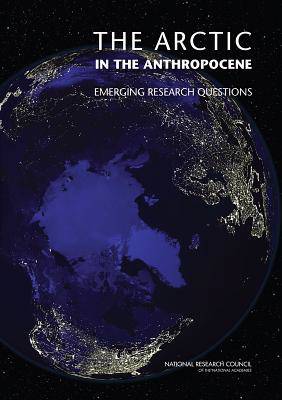
- Retrait gratuit dans votre magasin Club
- 7.000.000 titres dans notre catalogue
- Payer en toute sécurité
- Toujours un magasin près de chez vous
- Retrait gratuit dans votre magasin Club
- 7.000.0000 titres dans notre catalogue
- Payer en toute sécurité
- Toujours un magasin près de chez vous
The Arctic in the Anthropocene
Emerging Research Questions
National Research Council, Division on Earth and Life Studies, Polar Research Board, Committee on Emerging Research Questions in the ArcticDescription
Once ice-bound, difficult to access, and largely ignored by the rest of the world, the Arctic is now front and center in the midst of many important questions facing the world today. Our daily weather, what we eat, and coastal flooding are all interconnected with the future of the Arctic. The year 2012 was an astounding year for Arctic change. The summer sea ice volume smashed previous records, losing approximately 75 percent of its value since 1980 and half of its areal coverage. Multiple records were also broken when 97 percent of Greenland's surface experienced melt conditions in 2012, the largest melt extent in the satellite era. Receding ice caps in Arctic Canada are now exposing land surfaces that have been continuously ice covered for more than 40,000 years.
What happens in the Arctic has far-reaching implications around the world. Loss of snow and ice exacerbates climate change and is the largest contributor to expected global sea level rise during the next century. Ten percent of the world's fish catches comes from Arctic and sub-Arctic waters. The U.S. Geological Survey estimated that up to 13 percent of the world's remaining oil reserves are in the Arctic. The geologic history of the Arctic may hold vital clues about massive volcanic eruptions and the consequent release of massive amount of coal fly ash that is thought to have caused mass extinctions in the distant past. How will these changes affect the rest of Earth? What research should we invest in to best understand this previously hidden land, manage impacts of change on Arctic communities, and cooperate with researchers from other nations?
The Arctic in the Anthropocene reviews research questions previously identified by Arctic researchers, and then highlights the new questions that have emerged in the wake of and expectation of further rapid Arctic change, as well as new capabilities to address them. This report is meant to guide future directions in U.S. Arctic research so that research is targeted on critical scientific and societal questions and conducted as effectively as possible. The Arctic in the Anthropocene identifies both a disciplinary and a cross-cutting research strategy for the next 10 to 20 years, and evaluates infrastructure needs and collaboration opportunities. The climate, biology, and society in the Arctic are changing in rapid, complex, and interactive ways. Understanding the Arctic system has never been more critical; thus, Arctic research has never been more important. This report will be a resource for institutions, funders, policy makers, and students. Written in an engaging style, The Arctic in the Anthropocene paints a picture of one of the last unknown places on this planet, and communicates the excitement and importance of the discoveries and challenges that lie ahead.
Spécifications
Parties prenantes
- Auteur(s) :
- Editeur:
Contenu
- Nombre de pages :
- 224
- Langue:
- Anglais
Caractéristiques
- EAN:
- 9780309301831
- Date de parution :
- 31-08-14
- Format:
- Livre broché
- Format numérique:
- Trade paperback (VS)
- Dimensions :
- 175 mm x 251 mm
- Poids :
- 566 g

Les avis
Nous publions uniquement les avis qui respectent les conditions requises. Consultez nos conditions pour les avis.






